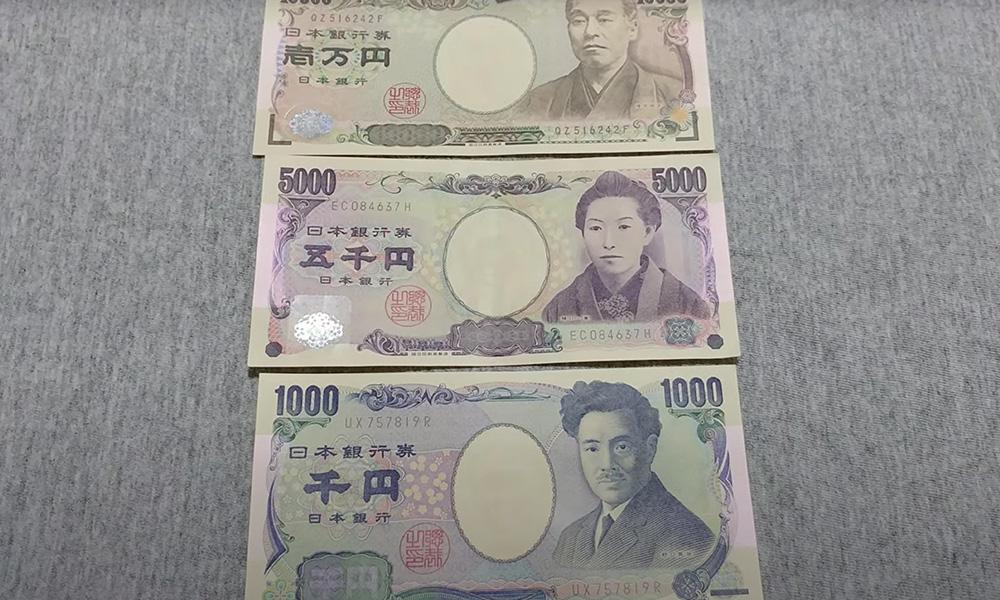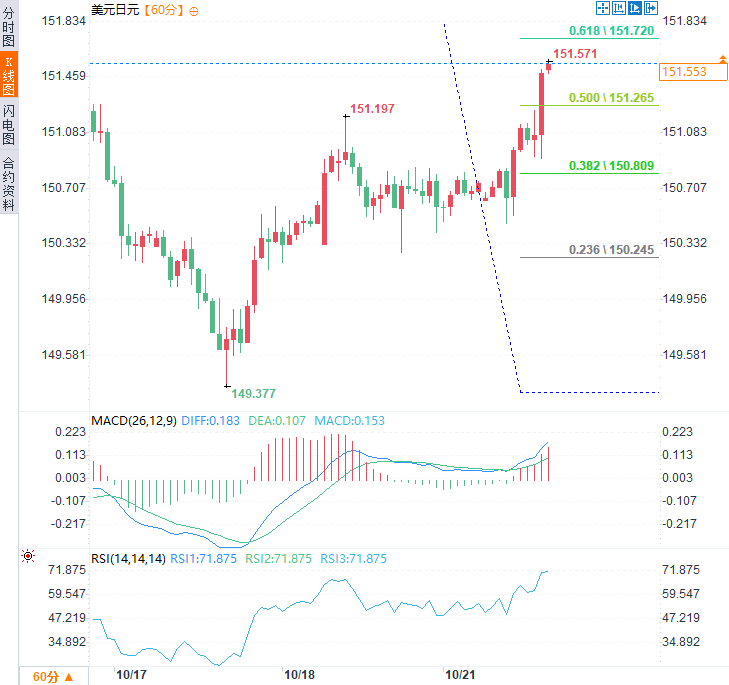With Sanae Takaichi appointed as Prime Minister of Japan, Abenomics may make a comeback, potentially triggering a depreciation of the yen?
2025-10-21 14:34:00

However, investors generally believe that the Bank of Japan will stick to its policy normalization path, given the backdrop of sticky inflation and economic resilience. This diverges significantly from market expectations for a dovish Federal Reserve, potentially limiting further appreciation of the US dollar and curbing gains against the yen. Furthermore, the expected narrowing of the US-Japan interest rate differential may provide some support for the low-yielding yen.
Sanae Takaichi was elected Prime Minister and advocated for expansionary fiscal policy.
According to CCTV News, in Tuesday's election for the nomination of prime minister of the House of Representatives of Japan, Liberal Democratic Party leader Sanae Takaichi secured 237 votes (out of a total of 465 seats), securing a majority. While the Senate nomination for prime minister has yet to be held, Takaichi has effectively been elected as Japan's 104th prime minister, marking the country's first female prime minister.
Sanae Takaichi, 64, who was elected as the leader of the Liberal Democratic Party on the 4th of this month, is one of the representative figures of Japan's right-wing politicians. She has always been regarded as a loyal supporter of "Abenomics" and advocates the implementation of loose monetary policy, expansion of fiscal spending and promotion of structural reforms.
She previously criticized the Bank of Japan's interest rate hike plans during the 2024 LDP leadership election, even though Bank of Japan Governor Kazuo Ueda said interest rates would be determined by the central bank "without any preconceived notions."
As of 14:10, the newly appointed Japanese Prime Minister Sanae Takaichi has entered the Prime Minister's Office and started to form a cabinet.
Earlier, at the signing ceremony on Monday, Nikkei reported Takaichi as saying, "As partners committed to realizing a common national vision, I eagerly look forward to working with you to strengthen the foundations of Japan's economy and build this land into a country that can be worthy of being entrusted to the next generation."
Yoshimura Hirofumi, leader of the Japan Restoration Party and governor of Osaka Prefecture, said, "As a reformist party, we share the desire to advance the reforms we have advocated so far and improve Japan." He spoke with Takaichi on Monday morning and informed him, "We have agreed to form a coalition government. Let us work together to move Japan forward."
The LDP's collaboration with the Japan Restoration Party comes after its longtime ally, Komeito, announced the end of its 26-year ruling coalition, plunging Japanese politics into turmoil. The decision triggered a fierce scramble among parties to form a new government to succeed the cabinet.
"The agreement incorporates what the LDP and the Japan Restoration Party and other parties had previously agreed upon," Takaichi said. "I believe this coalition government is crucial for moving Japan's politics forward effectively."
Japan's ruling Liberal Democratic Party and the Restoration Party reached a coalition agreement on Monday. In addition, the House of Representatives has voted to approve Sanae Takaichi as prime minister. These developments have intensified market expectations that Japan will implement more expansionary policies, which may prompt the Bank of Japan to further postpone the interest rate hike process .
The yen remains under pressure as concerns about Japan's fiscal outlook keep the market bearish.
Japan's inflation has remained above the Bank of Japan's 2% target for over three years, and economic data through June has shown growth for five consecutive quarters. Bank of Japan board member Sou Takada further clarified on Monday that Japan has essentially achieved its inflation target, while Bank of Japan Deputy Governor Shinichi Uchida reiterated last Friday that the central bank will continue to raise interest rates if economic and price trends meet expectations. This has fueled market expectations for another rate hike this year.
In stark contrast, according to the CME FedWatch tool, the market has fully priced in a 25 basis point rate cut at each of the Fed's October and December policy meetings.
The U.S. Senate rejected a bill to reopen the government for the 11th time on Monday, and the shutdown is about to enter its fourth week. The bipartisan deadlock continues with no signs of easing. These factors have put pressure on the US dollar and limited the upside of USD/JPY.
Geopolitically, a Ukrainian drone attack on a major gas processing plant in southern Russia has drawn attention. US President Trump's statement last Sunday that most of Ukraine's Donbas region should be ceded to Russia to end the conflict further exacerbated geopolitical uncertainty.
USD/JPY technical analysis: Bulls have the upper hand
USD/JPY returned to above 151, driven by bargain hunting, and bulls regained the initiative. Hourly chart technical indicators favor a bullish trend.
On the upside, initial resistance lies at the 61.8% Fibonacci retracement level of the decline from this month's high (151.72). If this resistance level is successfully broken, the exchange rate may stabilize at the 152.00 round mark, then challenge the 152.25 supply zone resistance level, and finally test the 153.00 mark.
On the downside, support lies in the 150.50-150.45 area (the Asian low) and around 150.25 (including the 23.6% Fibonacci retracement level), followed by the psychological level of 150.00. A break below 150.00 could lead to a drop to the 149.40-149.35 area (the two-week low hit last Friday). Further below this could lead to a slide towards the 149.00 round number, ultimately testing the strong resistance-turned-support zone of 148.45-148.40.

(USD/JPY hourly chart, source: Yihuitong)
At 14:33 Beijing time, the US dollar was trading at 151.54/55 against the Japanese yen.
- Risk Warning and Disclaimer
- The market involves risk, and trading may not be suitable for all investors. This article is for reference only and does not constitute personal investment advice, nor does it take into account certain users’ specific investment objectives, financial situation, or other needs. Any investment decisions made based on this information are at your own risk.





















